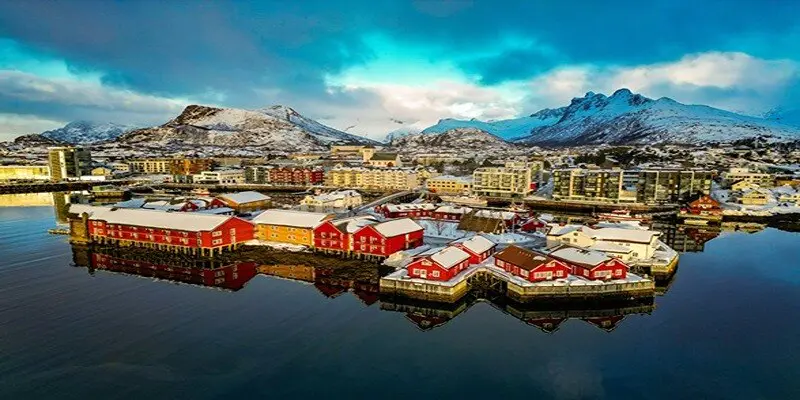The Lofoten Islands, nestled within the Arctic Ocean, are a treasure trove of natural beauty and cultural heritage in Norway. Renowned for their dramatic mountain ranges, crystal-clear waters, and untouched sandy beaches, these islands cater to a variety of interests, from nature enthusiasts to thrill-seekers and cultural explorers. This travel guide is designed to assist you in crafting the perfect 2024 visit, outlining the optimal times to go, transportation methods, lodging choices, and the must-do activities. Prepare for an extraordinary adventure filled with hiking, fishing, and much more.
Optimal Seasons for Exploring the Lofoten Islands
Seasonal Highlights of Lofoten
The Lofoten Islands are a destination for all seasons, with each offering distinct experiences. Winter (December to February) brings a snowy landscape perfect for Northern Lights sightings and winter sports. Spring (March to May) is characterized by melting snow and blossoming flora, ideal for hiking. Summer (June to August) is known for the Midnight Sun, extending daylight for activities like hiking and kayaking. Autumn (September to November) is a quieter time with vibrant foliage, perfect for photography and leisurely strolls. Familiarizing yourself with these seasonal patterns will enable you to tailor your vacation to your preferences.
Selecting the Right Time for Your Desired Activities
The ideal time to visit Lofoten is contingent upon your planned activities. For the best chance of witnessing the aurora borealis, plan your trip between late September and mid-April. The summer months (June to August) are unparalleled for trekking and outdoor adventures, with trails like Reinebringen and Ryten offering excellent conditions. Summer is also the peak season for fishing and boat tours. Autumn, with its colorful landscapes and fewer crowds, is ideal for photography and peaceful walks. No matter your interests, there's an ideal season for a memorable stay in Lofoten.
Accessing the Lofoten Islands
Transportation Methods: Air, Sea, and Road
Accessing the Lofoten Islands requires some travel, but the journey itself is part of the experience. The quickest method is by air, with flights from major Norwegian cities such as Oslo to Leknes or Svolvær airports, which are well-connected for convenience. Alternatively, you can drive to Moskenes from Bodø and take a ferry to the islands. Driving allows for flexibility and the opportunity to explore at your leisure, with the E10 road providing a scenic route to Lofoten through tunnels and bridges. Each mode of transportation offers a unique experience en route to Lofoten.
Navigating the Lofoten Islands
Once you arrive in Lofoten, getting around is quite manageable. Renting a car is highly recommended for exploring remote areas and discovering hidden gems. The roads are well-maintained, offering the freedom to visit lesser-known spots. Buses service major towns and attractions but are less frequent, especially during the off-season. Cycling is a popular summer activity, offering an exhilarating way to explore the islands.
Accommodation Options in the Lofoten Islands
Lodging Choices: A Variety of Experiences
Lofoten provides a range of accommodations to suit various tastes and budgets. Whether you choose to stay in the lively centers of Svolvær and Reine or opt for traditional fishermen's cabins (rorbuer) in villages like Hamnøy and Sakrisøy, you're guaranteed a memorable stay. Many rorbuer have been transformed into comfortable guesthouses, offering a cultural immersion with spectacular views.
Recommended Areas for Lodging in Lofoten
The choice of where to stay depends on your travel plans. Reine and Hamnøy are excellent for breathtaking views and proximity to hiking trails. Svolvær, the largest town, offers a mix of natural splendor and modern conveniences, including dining and shopping options. For a quieter, more intimate experience, consider Henningsvær, an artistic


 Top-rated Choice
Top-rated Choice